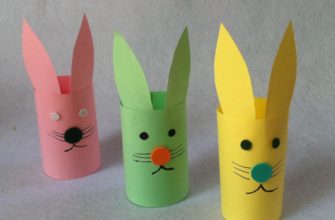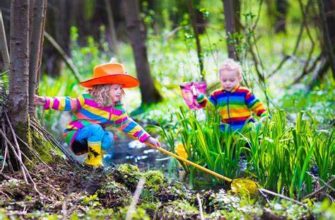When it comes to providing a safe and rewarding outdoor space for toddlers to explore and play, a well-designed play area is essential. Investing time and effort into planning and designing a stimulating outdoor environment can have a significant impact on a child’s physical, cognitive, and emotional development. By incorporating elements that cater to their needs and interests, you can create an environment that fosters learning, creativity, and social interaction.
Nurturing safety: Ensuring the safety of young children should be the foremost consideration when designing an outdoor play area. It is important to identify potential hazards and take appropriate measures to eliminate or minimize risks. Installing soft and impact-absorbing surfaces, such as rubber or synthetic grass, helps reduce the risk of injury from falls. Utilizing sturdy materials for play structures and equipment, like non-toxic plastic or wood, can also enhance safety.
Revolutionize Your Health & Lifestyle!
Dive into the world of Ketogenic Diet. Learn how to lose weight effectively while enjoying your meals. It's not just a diet; it's a lifestyle change.
Learn MoreBy considering the physical abilities and limitations of toddlers, you can design play spaces that promote their independence and confidence. Incorporating features like low platforms for climbing, bridges for balancing, and tunnels for crawling can encourage gross motor development and coordination.
Ensuring Safety
When creating an outdoor play environment for young children, it is of utmost importance to prioritize their safety above all else. With an array of unpredictable scenarios that can occur, it is imperative to take precautionary measures and implement strategies to ensure a safe and secure play area that minimizes potential hazards.
To begin, it is crucial to carefully assess and eliminate any potential risks within the outdoor play area. Conduct a thorough inspection of the space, addressing areas such as uneven surfaces, sharp edges, protruding objects, and potential entrapments. By removing or modifying these elements, you can significantly reduce the chances of accidents occurring and create a safer environment for toddlers.
In addition, implementing appropriate safety surfacing is essential in protecting toddlers from injuries caused by falls. Ensuring that the play area is covered with impact-absorbing materials such as rubberized mats or wood chips can provide a cushioning effect, minimizing the risk of head injuries or broken bones resulting from accidents.
Proper supervision is also paramount in maintaining a safe play area for toddlers. It is crucial to have adults present at all times to closely monitor the children and intervene if necessary. Educating parents and caregivers about the importance of active supervision can further enhance the safety of the outdoor play space, as they can actively participate in ensuring the well-being of the toddlers.
Furthermore, installing appropriate fencing and gating around the outdoor play area is essential to prevent unauthorized access and keep children within the designated play zone. This serves as an additional layer of protection, safeguarding toddlers from potential dangers outside the controlled play environment.
Regular inspections and maintenance are critical to ensure ongoing safety within the outdoor play area. Conduct thorough checks to identify and address any potential hazards as they arise, such as loose bolts, damaged play equipment, or deteriorating surfacing materials. Maintaining a well-maintained and regularly inspected play area is crucial in preventing accidents and ensuring the safety of toddlers.
- Regularly inspect equipment and surfacing materials for signs of wear and tear.
- Secure all loose bolts, hinges, or hooks on play equipment.
- Keep play areas clean and free from debris or hazards.
- Establish clear guidelines and rules for safe play, and educate children on adhering to them.
- Provide shaded areas to protect toddlers from excessive sun exposure.
By following these safety measures and guidelines, you can create an outdoor play area that not only stimulates toddlers but also ensures their well-being and minimizes the risk of accidents or injuries. Remember, the safety and security of young children should always be the top priority when designing an outdoor play space.
Secure Boundaries
Creating a safe and contained environment is essential when designing an outdoor play area for young children. Establishing secure boundaries not only helps to ensure their physical safety, but also provides them with a sense of security and freedom to explore and play.
The first step in creating secure boundaries is selecting appropriate fencing or barriers. This not only prevents unauthorized access to the play area, but also keeps toddlers from wandering off into potentially dangerous situations. A sturdy fence with a childproof gate is ideal, ensuring that little ones cannot easily climb over or open it.
Another important consideration for secure boundaries is ensuring that potential hazards are kept at a safe distance from the play area. This may include placing the play area away from busy streets or bodies of water, or installing barriers or hedges to separate it from any potential dangers nearby.
In addition to physical boundaries, it is important to establish clear guidelines and rules for safety within the play area. This may include teaching toddlers to stay within the designated play area and not to venture beyond its boundaries without adult supervision. By setting these expectations and consistently reinforcing them, children develop an understanding of their limits and learn to respect and follow the boundaries in place.
Lastly, it is crucial to regularly inspect and maintain the secure boundaries to ensure that they remain effective and safe over time. This includes checking the integrity of the fence or barriers, repairing any damages promptly, and removing any potential hazards that may have encroached upon the play area.
By creating secure boundaries, you are providing toddlers with a safe and protected space where they can freely play and explore, fostering their cognitive, physical, and social development while giving you peace of mind.
Cushioned Surfaces
When it comes to creating a secure and engaging outdoor area for young children, one important element to consider is the provision of cushioned surfaces. These surfaces play a vital role in ensuring the safety and well-being of toddlers as they explore and play in the outdoor environment.
Having cushioned surfaces in the play area helps to minimize the risk of injuries caused by falls and accidents. By providing a soft and forgiving landing surface, such as rubber, foam, or synthetic turf, toddlers have a reduced chance of sustaining serious injuries if they trip, stumble, or fall while playing outdoors.
Furthermore, cushioned surfaces can also contribute to the overall stimulation and development of toddlers. Soft surfaces enable kids to engage in physical activities such as crawling, rolling, and tumbling without the fear of getting hurt. These surfaces can also enhance sensory experiences, allowing toddlers to explore textures and sensations through touch and locomotion.
It is important to regularly inspect and maintain cushioned surfaces to ensure their effectiveness and durability. Adequate drainage systems, proper installation, and regular cleaning are essential in maintaining the functionality and safety of these surfaces.
In conclusion, incorporating cushioned surfaces in the design of outdoor play areas for toddlers is crucial to ensure their safety and provide a stimulating environment. By offering protection from falls and encouraging physical exploration, these surfaces play a vital role in the healthy development of young children.
Safe Play Equipment
In order to create a secure and engaging outdoor play environment for young children, it is essential to carefully select and install suitable play equipment. The right choice of play equipment can greatly contribute to their overall safety and enjoyment.
One important factor to consider when selecting play equipment for toddlers is durability. Sturdy and well-built equipment can withstand the rough and active play of energetic toddlers without the risk of breakage. Look for equipment made from high-quality materials such as metal or sturdy plastic that can endure the test of time and constant use.
In addition to durability, the size of play equipment is also crucial for the safety of toddlers. It is essential to choose equipment that is appropriate for their size and age group to prevent accidents and injuries. Avoid equipment with large gaps or openings that could trap small fingers, and always ensure that there are no sharp edges or protruding parts that could cause harm.
Another key consideration when selecting safe play equipment is its accessibility and inclusivity. Toddlers of different abilities should be able to safely enjoy the equipment. Look for equipment with various features that can cater to children with different physical and sensory abilities, such as ramps, handrails, and sensory panels.
Furthermore, it is important to regularly inspect and maintain the play equipment to ensure its ongoing safety. Check for any signs of wear or damage, such as loose bolts or cracked surfaces, and promptly repair or replace any compromised parts. Regular cleaning and sanitation should also be carried out to maintain hygiene and prevent the spread of germs.
By selecting safe and suitable play equipment, you can create an outdoor play area that promotes the physical, cognitive, and social development of toddlers, all while keeping them protected from potential hazards.
Encouraging Active Play
Creating an environment that promotes physical activity is essential for toddlers to develop their gross motor skills and overall health. In this section, we will explore different strategies and ideas to encourage active play in the outdoor play area.
- Engage in Fun and Energetic Games: Encourage toddlers to participate in exciting games that involve running, jumping, and climbing. Provide age-appropriate equipment like balls, hula hoops, and small obstacles to keep them engaged.
- Promote Exploration and Discovery: Designing the play area with various elements like sandboxes, nature trails, and sensory gardens can encourage toddlers to explore, crawl, and interact with their surroundings.
- Create Open Spaces: Allocate enough open spaces for toddlers to freely move around. This allows them to run, skip, or engage in other physical activities without any restrictions.
- Provide Opportunities for Social Interaction: Arrange play structures that encourage group play, teamwork, and cooperation. This can include climbing structures with multiple entrances, swings for two, or a small sandbox where toddlers can build together.
- Incorporate Balance and Coordination Activities: Include equipment like balance beams, stepping stones, or low-level climbing walls to help toddlers develop their balance and coordination skills.
- Integrate Nature in the Play Area: Incorporate natural elements such as rocks, logs, or tree stumps to create a natural play environment. This allows toddlers to engage in activities like jumping from log to log or climbing over rocks.
- Encourage Imaginative Play: Provide space for pretend play activities like a playhouse, a mini-garden, or a designated area for role-playing. This stimulates their creativity and helps develop cognitive and social skills.
- Ensure Safety Measures: While encouraging active play, it is vital to prioritize safety. Install soft surfaces like rubber mats or wood chips in areas where toddlers may fall. Regularly inspect the play area for any potential hazards and maintain a safe environment.
By implementing these strategies, we can create an outdoor play area that motivates toddlers to be active, promotes their physical development, and allows them to have fun while exploring and playing with others.
Variety of Play Structures
Offering a diverse range of play structures can enhance the outdoor play experience for toddlers, providing them with a multitude of opportunities for learning and development. By incorporating a variety of different structures, caregivers can create an engaging play environment that promotes physical activity, imagination, and social interaction.
It is important to provide a mix of play structures that cater to different interests and abilities. This can include climbing frames, slides, swings, balance beams, and tunnels, among others. These structures should be age-appropriate and designed with the safety of toddlers in mind.
Each play structure offers unique benefits for toddlers. Climbing frames encourage the development of gross motor skills and coordination, while slides promote a sense of adventure and risk-taking with controlled speed. Swings provide a soothing and calming experience, while balance beams allow children to practice their balancing abilities. Tunnels can stimulate imaginative play and foster creativity.
The variety of play structures also encourages social interaction among toddlers. When different structures are available, children can engage in cooperative play, taking turns, and sharing their play experiences. This helps them develop important social skills such as communication, empathy, and problem-solving.
To ensure a safe and stimulating outdoor play area, it is essential to regularly inspect and maintain the play structures. The surfaces should be smooth and free from any sharp edges or protrusions. Adequate ground coverings such as rubber mulch or artificial turf should be in place to cushion falls. Supervision by responsible adults is also crucial to ensure toddlers’ safety and facilitate positive play experiences.
In conclusion, offering a variety of play structures in an outdoor play area for toddlers is key to creating a safe and stimulating environment. By providing different options, caregivers can promote physical activity, imagination, and social interaction, while also ensuring that the structures are age-appropriate and regularly maintained for optimal safety.
Balancing Activities
Balance is a critical skill for toddlers to develop as it helps them to navigate their surroundings with confidence and stability. In this section, we will explore a variety of engaging and safe balancing activities that can be incorporated into your outdoor play area for little ones.
Encouraging toddlers to practice balancing not only enhances their physical development but also fosters their cognitive and sensory abilities. One way to incorporate balancing activities is by providing a range of surfaces with different textures and levels of stability. For example, a low beam made of sturdy wood can be placed on the ground to challenge toddlers to walk along it, enhancing their proprioception and balance control.
In addition to traditional balancing beams, you can introduce interactive elements that require toddlers to shift their weight and maintain equilibrium. Stepping stones of varying heights and sizes can be arranged in a zigzag pattern, encouraging children to carefully plan their steps and engage their core muscles for stability. These stepping stones can be made from soft, non-slip materials to ensure safety.
Another creative way to incorporate balancing activities is through the use of wobble boards or balance discs. These items are designed to provide an unstable surface, challenging toddlers to find their center of gravity and adjust their movements accordingly. Wobble boards can be made from durable plastic or wood, while balance discs can be inflatable, allowing for easy storage and transportation.
When designing your outdoor play area, consider incorporating natural elements such as logs or tree stumps. These rustic features not only provide opportunities for balancing but also connect children with nature and promote a sense of adventure. Ensure that the logs or stumps are securely placed and free from sharp edges to reduce the risk of injuries.
Remember to supervise toddlers during balancing activities and provide appropriate support and guidance as needed. By incorporating a range of stimulating and safe balancing activities, you will create an outdoor play area that promotes toddlers’ physical development, coordination, and self-confidence.
Space for Running and Climbing
In order to create a dynamic and engaging outdoor play area for toddlers, it is important to provide ample space for them to run and climb. This section will explore the benefits of including open areas and climbing structures in the design of a play space.
Encouraging toddlers to run and climb is essential for their physical and cognitive development. Running promotes gross motor skills, coordination, and balance, while climbing helps to develop strength, problem-solving abilities, and spatial awareness. By incorporating elements that allow toddlers to engage in these activities, you are providing them with opportunities for both physical exercise and mental stimulation.
When designing a play area, consider including an open space that allows toddlers to freely run and explore. This can be achieved by leaving a patch of grass or including a paved area for them to roam around. Additionally, it is beneficial to incorporate age-appropriate climbing structures such as low platforms, steps, or ladders. These features encourage toddlers to challenge themselves physically and build their confidence as they conquer new heights.
Furthermore, it is important to ensure the safety of the running and climbing space. Use soft surfaces like rubber or artificial turf beneath climbing structures to minimize the risk of injuries from falls. Inspect equipment regularly to ensure it is secure and free of sharp edges or protruding parts. Keeping the area well-maintained and free of obstacles will also help to prevent accidents and provide a safe environment for toddlers to play.
In conclusion, providing a space for toddlers to run and climb is an essential component of a well-designed outdoor play area. By creating an environment that supports their physical and cognitive development, you are fostering their overall growth and ensuring a safe and stimulating experience for them.
Promoting Sensory Exploration
Sensory exploration plays a crucial role in the development and learning of toddlers. By engaging their senses, children can enhance their cognitive, emotional, and physical development. In this section, we will explore strategies to create an outdoor play area that encourages and promotes sensory exploration in young children.
Encourage tactile experiences: Providing a variety of textures and materials in the outdoor play area can help stimulate a child’s sense of touch. Incorporate surfaces such as soft grass, smooth rocks, and rough sand to allow toddlers to explore different sensations through their fingertips.
Emphasize visual stimuli: Incorporating bright colors, patterns, and visual elements can capture a toddler’s attention and stimulate their visual senses. Consider using colorful play equipment, murals, or nature-inspired artwork to create an engaging visual environment.
Introduce auditory elements: Adding auditory elements to the outdoor play area can create a multisensory experience for toddlers. Include musical instruments, wind chimes, or interactive sound panels to promote exploration and appreciation of different sounds and tones.
Engage the olfactory senses: Introduce natural scents and fragrances into the play area to promote sensory exploration. Plant aromatic flowers or herbs, such as lavender or mint, and allow children to engage their sense of smell as they explore and play outdoors.
Encourage gross motor activities: Engaging in physical activities not only promotes physical development but also provides sensory stimulation. Include age-appropriate climbing structures, swings, tunnels, and balance beams to encourage toddlers to explore their body’s movements and develop their motor skills.
Support proprioception and balance: Proprioception, or the awareness of one’s body position and movement, is an important sensory system to develop. Including equipment such as balance beams, stepping stones, and trampolines can encourage toddlers to develop their balance and spatial perception.
Promote imaginative play: Create opportunities for toddlers to engage in imaginative play, which can further enhance their sensory exploration. Provide open-ended materials such as sand, water, blocks, and dramatic play props to encourage creativity and sensory integration in their play experiences.
Cultivate a connection with nature: Incorporate natural elements into the outdoor play area to promote a sense of connection with the environment. Include plants, trees, and natural materials such as logs and stones to allow toddlers to engage with nature and experience the sights, sounds, and textures it offers.
Encourage social interaction: A safe and stimulating outdoor play area should also promote social interaction among toddlers. Include spaces for group play, such as sandboxes or picnic areas, where children can engage in cooperative play, communicate, and learn from one another.
By implementing these strategies, you can design an outdoor play area that not only ensures the safety of toddlers but also promotes their sensory exploration, imagination, and overall developmental growth.
Questions and answers
What are some important factors to consider when designing an outdoor play area for toddlers?
When designing an outdoor play area for toddlers, it is important to consider factors such as safety, accessibility, age-appropriate equipment, and stimulation. Safety should be the top priority, with measures in place to protect toddlers from falls, sharp edges, and other potential hazards. The play area should also be easily accessible for young children, with wide pathways and ramps for strollers or wheelchairs. Age-appropriate equipment, such as small slides or swings with proper safety measures, should be included to ensure that toddlers can engage in play without getting injured. Additionally, the play area should provide opportunities for sensory, cognitive, and physical stimulation, with a variety of textures, colors, and activities to keep toddlers engaged and stimulated.
What are some tips for ensuring the safety of an outdoor play area for toddlers?
Ensuring the safety of an outdoor play area for toddlers involves several key tips. Firstly, it is important to choose equipment and materials that are age-appropriate and meet safety standards. This includes selecting equipment with rounded edges, secure anchors, and appropriate heights. Secondly, regular inspections and maintenance should be conducted to identify and address any potential hazards. This includes checking for loose bolts or screws, inspecting the ground surface for any tripping hazards, and ensuring that all equipment is in good condition. It is also important to provide adequate supervision, whether it be by parents, caregivers, or trained staff, to monitor the toddlers and intervene if necessary. Finally, the play area should be properly fenced or enclosed to prevent unauthorized access and to keep the toddlers within a safe and controlled area.
How can an outdoor play area be designed to stimulate toddlers?
Designing an outdoor play area to stimulate toddlers involves incorporating elements that engage their senses and encourage exploration. This can be achieved by incorporating a variety of textures, such as sand, grass, or rubber surfaces, for the toddlers to touch and feel. The play area can also include structures with bright colors and interactive features, such as buttons or musical panels, to stimulate their visual and auditory senses. Providing opportunities for physical play, such as climbing structures, balance beams, or tunnels, allows toddlers to engage in active exploration and develop their gross motor skills. Additionally, including nature elements, such as planting beds or a miniature garden, can provide sensory stimulation and an opportunity for toddlers to learn about the natural world.
Is it necessary to include shade in an outdoor play area for toddlers?
Yes, it is highly recommended to include shade in an outdoor play area for toddlers. Sun protection is crucial to prevent sunburn and heat-related illnesses, which can be harmful to young children. Installing shade structures, such as umbrellas, canopies, or shade sails, helps to create shaded areas where toddlers can play comfortably. It is important to ensure that the shade structures are securely anchored and provide adequate coverage throughout the day. Alternatively, natural shade from trees can also be utilized, but it’s important to ensure that there are no falling branches or other hazards. Providing shade not only protects the toddlers from sun exposure but also creates a more comfortable and enjoyable environment for play.
Are there any specific guidelines or standards that should be followed when designing an outdoor play area for toddlers?
Yes, there are guidelines and standards that should be followed when designing an outdoor play area for toddlers. It is recommended to refer to the Consumer Product Safety Commission (CPSC) guidelines, which provide information on safety considerations and equipment requirements for playgrounds. Additionally, following the ASTM International Standards for Playground Equipment for Public Use can help ensure that the play area meets industry standards for safety and durability. It is also important to comply with any local regulations or building codes that may apply. Consulting with a professional playground designer or landscape architect who is knowledgeable in safety standards can also provide valuable guidance throughout the design process.
Why is it important to design a safe outdoor play area for toddlers?
Designing a safe outdoor play area for toddlers is important because it ensures their physical safety during playtime. It helps prevent accidents and injuries, reduces the risk of falls, and minimizes the chances of them coming into contact with harmful objects or substances.
What are some key factors to consider when designing a play area for toddlers?
When designing a play area for toddlers, it is important to consider factors such as age-appropriate equipment, impact-absorbing surfaces, secure fencing, adequate supervision, and accessibility for children with disabilities. These factors help create a safe and inclusive space for toddlers to play.
How can you stimulate toddlers in an outdoor play area?
There are several ways to stimulate toddlers in an outdoor play area. You can incorporate age-appropriate play equipment such as swings, slides, and climbing structures. Providing opportunities for sensory play with sand, water, or mud, and encouraging physical activities like running, jumping, and throwing can also stimulate toddlers’ senses and promote their overall development.
What are some potential hazards to watch out for in an outdoor play area for toddlers?
Some potential hazards to watch out for in an outdoor play area for toddlers include sharp edges or protrusions on play equipment, loose or broken parts, inadequate cushioning or impact-absorbing surfaces, exposed electrical wires, and small objects that could pose a choking hazard. Regular maintenance, inspections, and age-appropriate supervision can help identify and mitigate these hazards.
How can parents and caregivers ensure the safety of toddlers in an outdoor play area?
Parents and caregivers can ensure the safety of toddlers in an outdoor play area by actively supervising them, setting age-appropriate boundaries and rules, conducting regular safety checks of the play area and equipment, teaching children about potential hazards, providing proper protective gear, and encouraging safe play behaviors. It is also essential to stay informed about current safety guidelines and regulations for outdoor play areas.









